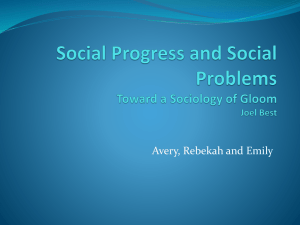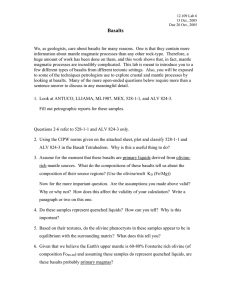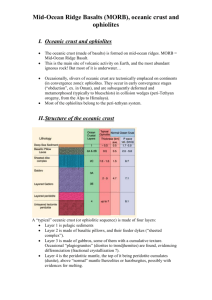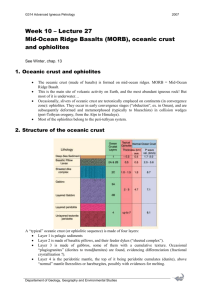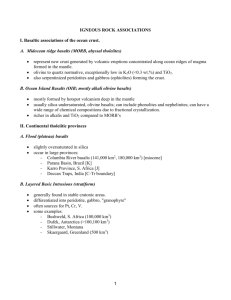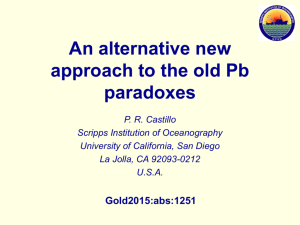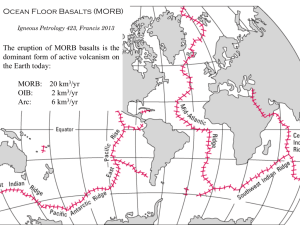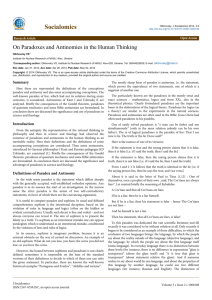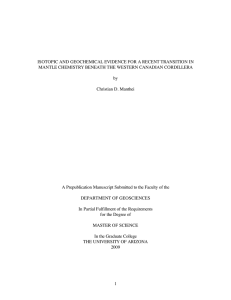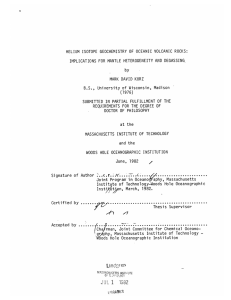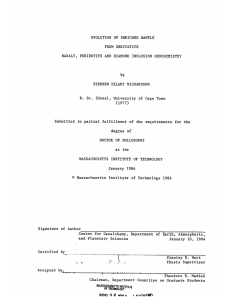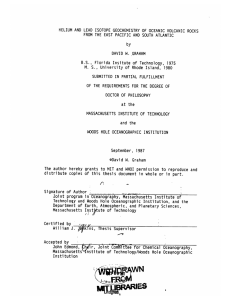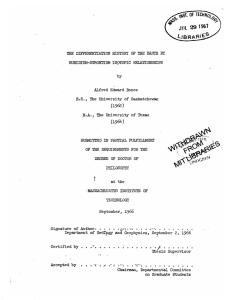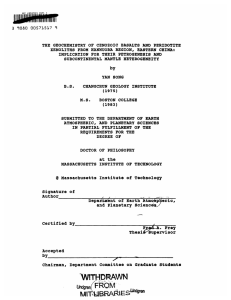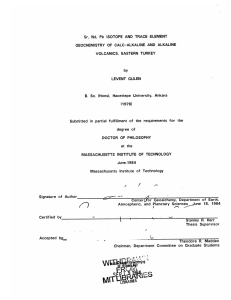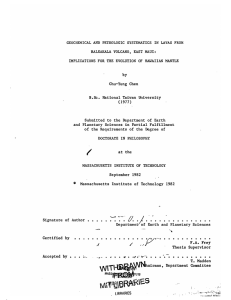Material properties and microstructure from
advertisement
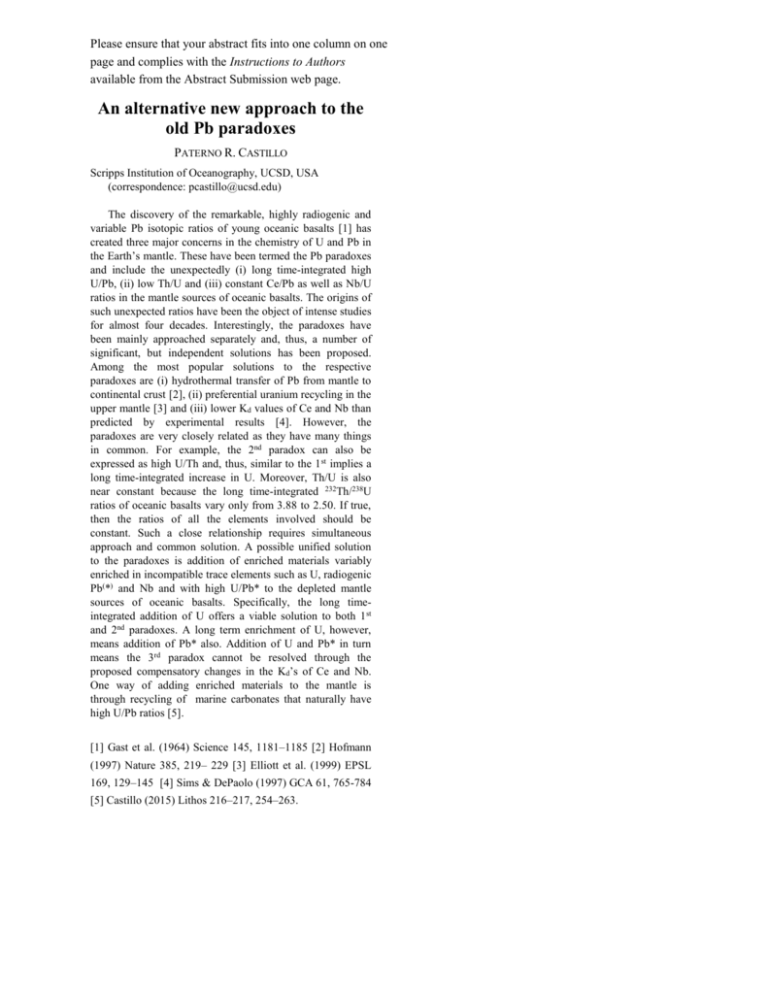
Please ensure that your abstract fits into one column on one page and complies with the Instructions to Authors available from the Abstract Submission web page. An alternative new approach to the old Pb paradoxes PATERNO R. CASTILLO Scripps Institution of Oceanography, UCSD, USA (correspondence: pcastillo@ucsd.edu) The discovery of the remarkable, highly radiogenic and variable Pb isotopic ratios of young oceanic basalts [1] has created three major concerns in the chemistry of U and Pb in the Earth’s mantle. These have been termed the Pb paradoxes and include the unexpectedly (i) long time-integrated high U/Pb, (ii) low Th/U and (iii) constant Ce/Pb as well as Nb/U ratios in the mantle sources of oceanic basalts. The origins of such unexpected ratios have been the object of intense studies for almost four decades. Interestingly, the paradoxes have been mainly approached separately and, thus, a number of significant, but independent solutions has been proposed. Among the most popular solutions to the respective paradoxes are (i) hydrothermal transfer of Pb from mantle to continental crust [2], (ii) preferential uranium recycling in the upper mantle [3] and (iii) lower Kd values of Ce and Nb than predicted by experimental results [4]. However, the paradoxes are very closely related as they have many things in common. For example, the 2nd paradox can also be expressed as high U/Th and, thus, similar to the 1st implies a long time-integrated increase in U. Moreover, Th/U is also near constant because the long time-integrated 232Th/238U ratios of oceanic basalts vary only from 3.88 to 2.50. If true, then the ratios of all the elements involved should be constant. Such a close relationship requires simultaneous approach and common solution. A possible unified solution to the paradoxes is addition of enriched materials variably enriched in incompatible trace elements such as U, radiogenic Pb(*) and Nb and with high U/Pb* to the depleted mantle sources of oceanic basalts. Specifically, the long timeintegrated addition of U offers a viable solution to both 1 st and 2nd paradoxes. A long term enrichment of U, however, means addition of Pb* also. Addition of U and Pb* in turn means the 3rd paradox cannot be resolved through the proposed compensatory changes in the Kd’s of Ce and Nb. One way of adding enriched materials to the mantle is through recycling of marine carbonates that naturally have high U/Pb ratios [5]. [1] Gast et al. (1964) Science 145, 1181–1185 [2] Hofmann (1997) Nature 385, 219– 229 [3] Elliott et al. (1999) EPSL 169, 129–145 [4] Sims & DePaolo (1997) GCA 61, 765-784 [5] Castillo (2015) Lithos 216–217, 254–263.
